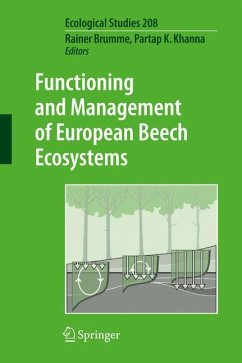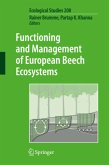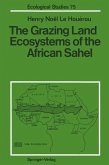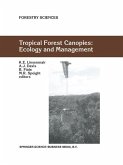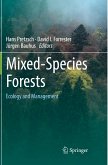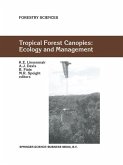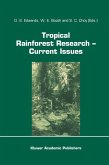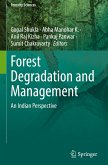This volume compiles the results of long-term observations of site properties and ecosystem processes for three beech forests. Representing a spectrum of common beech forest sites in Central Europe, they receive similar atmospheric inputs and are growing under similar climatic conditions, but differ in their soil acidity. Significant differences were observed in the diversity and activities of fauna and microbes in these soils, which was the major driving variable for the nutrient cycling processes, growth patterns, greenhouse gas emissions and the C and N sequestration in these forests. Differences in N and C contents and cycling among the three beech sites represented three phases (quasi steady-state, accumulation and degradation) as described by ecosystem theory on the functioning and historical development of the N dynamic of other 50 European ecosystems. Various implications for the future management of these and similar beech sites are discussed.
Temperate forests cover large areas of Europe and perform a number of important functions such as the regulation of energy and matter, production of wood and other resources, and conservation of biodiversity and habitats; they also have special signi?cance in social and cultural contexts. Initiated in 1960s, the ?rst International Biological Program (IBP) focused on ''the biological basis of productivity and human welfare. '' As the German contribution to the IBP, ecosystem research has been carried out since 1966 in the Solling area (Ellenberg H. , Ecological Studies 2, 1971), an upland region in Northwest Germany. This study provided clear evidence that the stability of forest ecosystems was threatened by the high inputs of at- spheric pollutants. This promoted many interdisciplinary research programs which were coordinated by Prof. Dr. Bernhard Ulrich and the Forest Ecosystems Research Center of the University of Go¨ttingen. This involved, in addition to the Solling site, the establishment of two other sites for long-term monitoring of ecosystem pro- ¨ cesses. The two contrasting sites were established in 1980 at Gottinger Wald on base-rich calcareous soil and in 1989 at Zierenberg on volcanic soil. These projects were funded initially by the Federal Ministry of Research and Technology (BMBF) as interdisciplinary projects under the titles: ''Conditions of Stability of Forest Ecosystems'' (1989-1993), and ''Dynamics of Forest Ecos- tems'' (1993-1998). The primary goal of these studies was to quantify the ecolo- cal condition of forests in a changing environment and element ?uxes.
Temperate forests cover large areas of Europe and perform a number of important functions such as the regulation of energy and matter, production of wood and other resources, and conservation of biodiversity and habitats; they also have special signi?cance in social and cultural contexts. Initiated in 1960s, the ?rst International Biological Program (IBP) focused on ''the biological basis of productivity and human welfare. '' As the German contribution to the IBP, ecosystem research has been carried out since 1966 in the Solling area (Ellenberg H. , Ecological Studies 2, 1971), an upland region in Northwest Germany. This study provided clear evidence that the stability of forest ecosystems was threatened by the high inputs of at- spheric pollutants. This promoted many interdisciplinary research programs which were coordinated by Prof. Dr. Bernhard Ulrich and the Forest Ecosystems Research Center of the University of Go¨ttingen. This involved, in addition to the Solling site, the establishment of two other sites for long-term monitoring of ecosystem pro- ¨ cesses. The two contrasting sites were established in 1980 at Gottinger Wald on base-rich calcareous soil and in 1989 at Zierenberg on volcanic soil. These projects were funded initially by the Federal Ministry of Research and Technology (BMBF) as interdisciplinary projects under the titles: ''Conditions of Stability of Forest Ecosystems'' (1989-1993), and ''Dynamics of Forest Ecos- tems'' (1993-1998). The primary goal of these studies was to quantify the ecolo- cal condition of forests in a changing environment and element ?uxes.
From the reviews:
"Studying, understanding and managing such a complex forest system is the central theme of the book ... . The good news is that data from many unpublished PhD and Diploma theses are included in this book, and otherwise these would have been forever lost to public use. ... The result is a rather heterogeneous book that has its strengths ... . Overall, the book is very useful for soil scientists who seek detailed information about abiotic and microbial parameters of forest ecosystems ... ." (Mark Maraun, Basic and Applied Ecology, Vol. 11 (6), 2010)
"Studying, understanding and managing such a complex forest system is the central theme of the book ... . The good news is that data from many unpublished PhD and Diploma theses are included in this book, and otherwise these would have been forever lost to public use. ... The result is a rather heterogeneous book that has its strengths ... . Overall, the book is very useful for soil scientists who seek detailed information about abiotic and microbial parameters of forest ecosystems ... ." (Mark Maraun, Basic and Applied Ecology, Vol. 11 (6), 2010)

